(3 minute read)
Some children appear to ‘magically’ pick up reading where others struggle, especially those with learning difficulties such as dyslexia. So how can we create a strong reading foundation for ALL kids?

Peter Usborne CBE, the founder of Usborne books and Teach Your Monster, believed that a solid foundation in reading is essential for children to grow into healthy adults. His career was dedicated to helping children develop their reading skills and improving access to reading. These principles led to the creation of our very first game, ‘Teach Your Monster to Read’. Key to its development was understanding the science behind how children learn to read.
Researchers and educators have worked for decades to understand the processes that underpin reading. This extensive body of work includes everything from studies on the long-term efficacy of reading instruction methods and interventions, to patterns discovered from brain scans in cutting-edge neuroscience research labs.
The modern ‘Science of Reading’ movement emerged from this foundation of evidence-based learning research. Today’s teachers, parents, and reading experts understand the importance of phonics, decoding and comprehension to improve reading outcomes for every student.
Successful early interventions can start with these building blocks of reading:
Phonemic Awareness: This is the ability to recognize and manipulate individual sounds (phonemes) in spoken words.
Phonics: To comprehend text, children must first understand the relationships between sounds (phonemes) and the written letters that represent them (graphemes). “Decoding” – matching letters to sounds – is what we mean by ‘phonics’.
Vocabulary: A rich vocabulary is crucial for comprehension. Children need to learn and understand the meanings of words to make sense of what they are reading.
Fluency: Fluency involves reading smoothly, accurately, and at an appropriate rate. Fluent readers can focus on comprehension rather than struggling with decoding.
Comprehension: Comprehension is the ultimate goal of reading. It's the ability to understand and make meaning from text. Effective comprehension strategies include making connections, asking questions, and summarizing.
In most UK schools, children are actively taught phonics from an early age. The method is catching on in American Schools as well. (I’m sure that class teachers would be happy to share the systems they use to teach phonics with keen parents!) Many teachers use our Teach Your Monster to Read game in their class because it was designed to help kids practice the foundational skills of phonics and phonemic awareness.
Parents can also support early reading development at home to build understanding and contribute to their child’s success. Here are some key takeaways from the research:
Start Early: Reading aloud to infants and toddlers promotes language development and can help spark an interest in reading.
Create a Literacy-Rich Environment: Surround children with books, magazines, and other reading materials. Encourage reading for pleasure to help it become a part of daily life.
Model Reading: Children are more likely to become readers when they see adults and siblings enjoying books. Be a reading role model.
Tailor Instruction: Recognize that each child is unique and may progress at their own pace. Provide support and help when needed.
Stay Informed: Keep an eye on the latest research and best practices in reading instruction. This knowledge can inform teaching methods and strategies.
The science of reading isn’t fixed — it is constantly updating and uncovering new insights into how children learn to read. But by studying and understanding the processes involved in reading and applying evidence-based strategies, we can empower children to become confident readers. Reading is not just a skill; it's a gateway to knowledge, imagination, and lifelong learning.
References
APnews - An end to the reading wars? More US schools embrace phonics
PBS - Why more U.S. schools are embracing a new ‘science of reading’
(4 minute read)
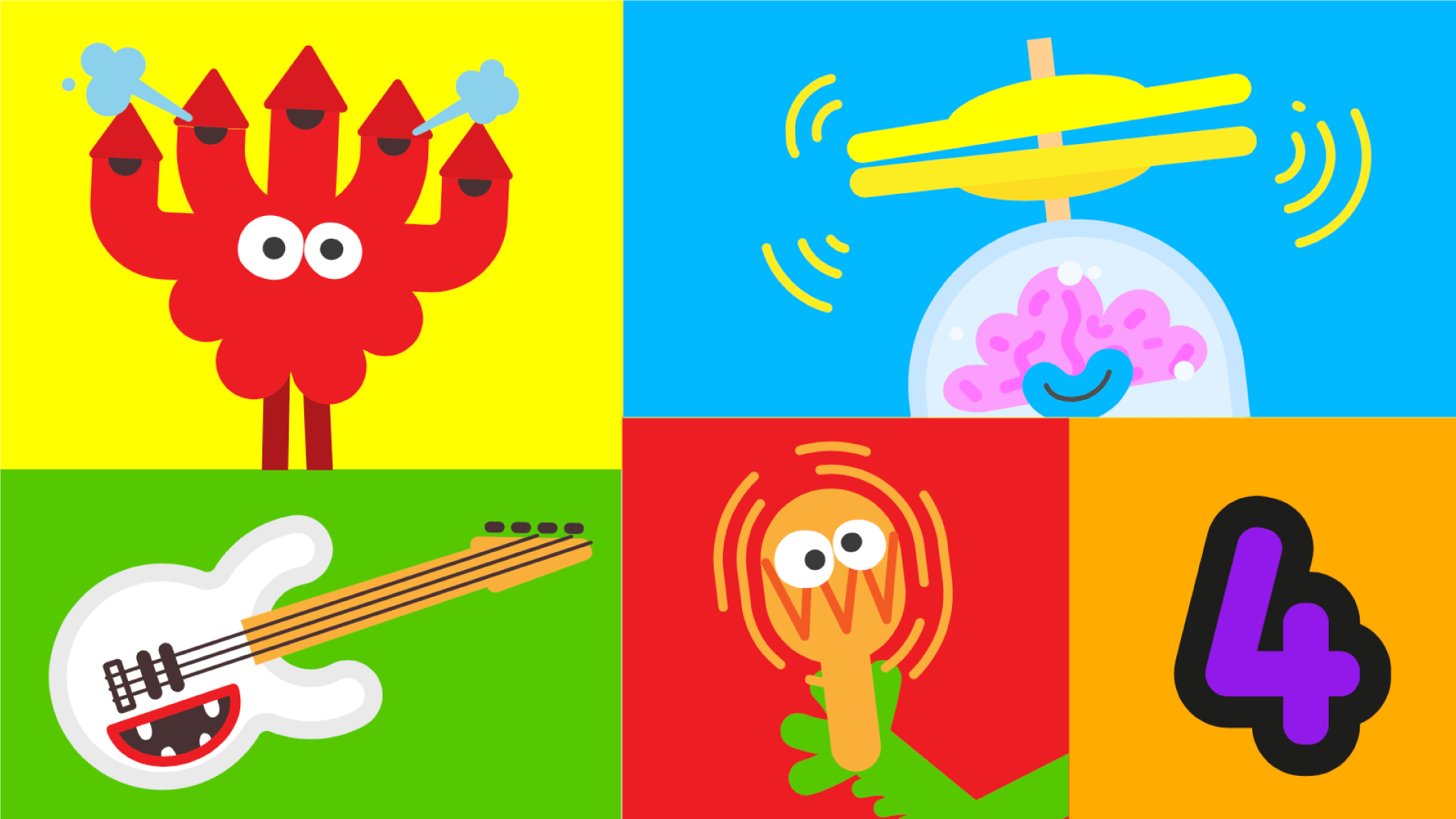
“Time for a music break!” As a primary school teacher, I used to love sticking on an educational song in my lessons, both as part of the learning process AND as a useful brain break if my pupils started to get restless. Quick and easy to implement, songs are super engaging, super fun and help promote memorization for young kids. I think we all remember ‘baby shark’ being stuck in our brains as a permanent earworm since 2015…
You may think of music and mathematics as unlikely partners but did you know that songs and musical experiences actually play a significant role in enhancing children's math and number skills? The impact of music in the field of mathematics is a subject that is gaining increasing attention. Let’s take a look at why.
The Rhythm of Learning
Music is often described as a universal language, and it's no wonder that it can serve as a powerful tool for teaching math concepts to children. The beats structured in rhythmic patterns, melodies, and lyrics in songs can help young learners grasp concepts in a fun and engaging way. Here are some ways in which music aids in mathematical development.
Memorization: Catchy songs with repetitive lyrics can help children memorize key mathematical facts, such as multiplication tables, addition, and subtraction.
Numerical Concepts: Music can help children understand numerical concepts like sequencing, patterns, and order. Songs that involve counting, such as "Five Little Monkeys" or "Ten in the Bed," reinforce the concept of numbers in a memorable repetitive way.
Spatial Awareness: Learning about fractions, geometry, and measurement often requires a solid understanding of spatial relationships. Music has its rhythmic beats and patterns, as well as positional thinking with low, middle and high notes. These help children develop spatial awareness or reasoning which has been linked to better mathematical understanding. Check out this Boogie Mites video for more on this.
Problem-Solving Skills: Music encourages problem-solving as children try to match rhythms, melodies, and lyrics. This problem-solving approach is transferable to mathematical problem-solving, where children apply their skills to real-world situations.
The Power of Catchy Tunes
Catchy songs have a unique ability to stick in our minds — the earworm effect — with melodies that are hard to forget. When applied to mathematics, this effect can be a powerful tool for enhancing children's number skills. Here's how a catchy tune works to benefit mathematical learning.
Engagement: Catchy songs capture children's attention and keep them engaged in the learning process. The excitement and enjoyment they experience while singing along to their favourite tunes make them more receptive to mathematical concepts.
Retention: Melodies and catchy lyrics are easier to remember than dry mathematical equations. Children can recall mathematical facts more readily when they are set to music, facilitating long-term retention.
Confidence Building: Success in singing along to a song can boost a child's self-confidence, making them more willing to tackle math problems and exercises.
Real-World Applications
The integration of music into mathematics education is not just theoretical — it has practical applications in the classroom and at home:
Math Apps and Games: Educational apps and games that combine mathematics with catchy songs and interactive elements are becoming increasingly popular. They provide an engaging way for children to practice math skills. Check out our math game Teach Your Monster Number Skills!
DIY Math Songs: Parents and educators can create their own math songs tailored to specific topics or skills that children need to develop. Personalized songs can make learning even more enjoyable and effective.
The relationship between music and mathematics is a harmonious one, benefiting children's development of their foundational number skills. Catchy songs and musical experiences provide an enjoyable avenue for children to explore mathematical concepts, from basic counting to more advanced problem-solving. Here at Teach Your Monster, we love this concept and after lots of research and development…drumroll please… we have just added 3 NUMBER SONGS to Teach Your Monster Number Skills! We can’t wait for these catchy tunes to help kids memorise their numbers (sorry in advance - these are definite earworms!)
Here is a list of our top 7 math songs for you to play at home!
- Counting to 5 - Teach Your Monster Number Skills
- Counting to 10 - Teach Your Monster Number Skills
- Number bonds to 10 - Teach Your Monster Number Skills
- Pattern learning - Go Noodle
- Count to 3 - Go Noodle
- Subitizing - Harry Kindergarten Music
- Count to and back from 10 - Gracie’s Corner
So, let the music play, and watch as it helps children dance their way to mathematical success!
Kay Leathers, Ex-Primary School Teacher and Contributor at Teach Your Monster.
Boogie Mites
(3 minute read)
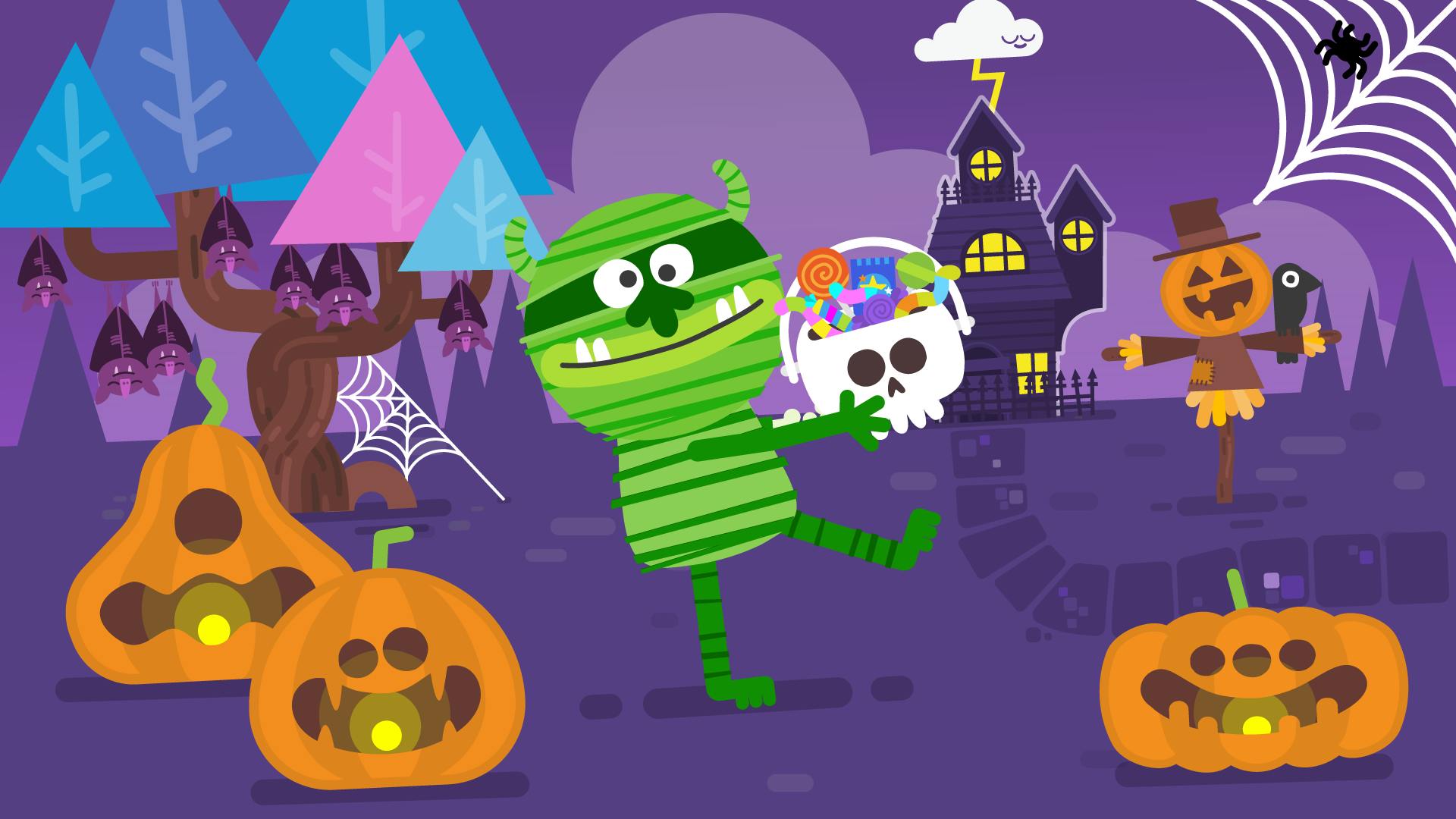
When I was eight, I stole my brother’s book about scary mythological creatures. It was like an encyclopedia of all scary things; vampires waiting at your windows, ghost heads dripping blood through the floorboards, sirens calling innocent sailors to crash on the rocks so they could devour them… It terrified me… but I loved this book! I pawed at its pages every night, taking in all the weird and wonderful tales. I remember each page vividly and the stories have stuck with me ever since…
Moral lessons, friendly characters, and happily-ever-after endings are what we often think about first when thinking about children’s stories. They provide comfort, reassurance, and a sense of stability for young readers and they have a purpose. They often teach valuable life lessons about kindness, friendship, and perseverance and show a simple world where problems are solved, and justice prevails.
However, children, like everyone else, have complex emotions and experiences that can't always be neatly packaged into sweet and safe narratives. Children can enjoy a wide spectrum of stories, including those that are dark, weird, unsettling, or even frightening! Think of the terrible weird things that happen in your favorite Roald Dahl story (George's Marvelous Medicine!), the popularity of Fungus the Bogeyman, Where the Wild Things Are, or warnings about wolves in Grandma's clothing from your favorite fairy tale.
These darker or more ambiguous stories serve a different purpose. Children are naturally curious about the world around them, and they encounter challenges, fears, and uncertainties as they grow. Darker stories often acknowledge the presence in life of feelings such as loss, fear, and adversity.
It’s true that unsettling or horrible stories may seem inappropriate for children at first glance. However, these stories, when crafted thoughtfully, can also play a valuable role in a child's literary diet. They provide an opportunity for children to confront their fears and anxieties in a controlled and comfortable setting. By experiencing these feelings through fiction, children can learn to cope with strong emotions and develop their resilience.
These stories can also serve as a vehicle for discussing challenging topics with children. They can help parents and educators start discussions on tricky topics, provide valuable lessons about empathy and social responsibility, and address issues like bullying, discrimination, and the consequences of negative actions.
Children's lives are far from one-dimensional. They experience moments of joy and sorrow, bravery and fear, love and hate. Like all of us, they grapple with the complexities of existence. They are drawn to stories that encompass the full range of human experiences. By embracing the richness of children's literature and offering a diverse array of stories, we empower children to become more compassionate, resilient, and emotionally intelligent individuals.
Whether my early experience with my brother’s book of ghosts and vampires had any long term effects, I can’t say, but (yes, we may be biased) we believe that Monsters can be fun.
We asked members of the Teach Your Monster Team for their favourite spooky, dark and weird children's books and here's what they came up with...
- Dracula: A BabyLit by Jennifer Adams and Alison Oliver
- The Stinky Cheese Man and Other Fairly Stupid Tales by Lane Smith and John Scieszka
- The Wolves in the Walls by Neil Gaiman and Dave Mc Kean
- Funnybones by Janet and Allan Ahlberg
- Meg and Mog by Helen Nicoll and Jan Pienkowski
- Haunted House by Jan Pienkowski
- Room on the Broom by Julia Donaldson and Alex Scheffer
- Nightmare Before Christmas by Tim Burton
- The Dark by Lemony Snickett and Jon Klasson
- How to Make Friends with a Ghost by Rebecca Green
And for slightly older readers the Worst Witch by Jill Murphy and the Little Vampire by Angela Summer-Bodenburg had a few fans!
Kay Leathers, Contributor at Teach Your Monster.
(3 minute read)
Did you talk to your kids about feelings on World Mental Health day (10th October)? Missed it? No worries (or any other negative feelings please!) We’re going to discuss how we can help our kids develop healthy ways of talking about their feelings.

Recent studies have shown that mental health has declined in almost 40% of school children in England, prompting organisations such as ITV to launch campaigns like Britain Get Talking - with a focus on helping young people communicate their feelings with the people around them. If you have older children, why not try out this handy homework from the campaign with them.
Just like adults, young kids have a wide range of complex emotions, but don’t necessarily have the language or understanding to express them, or recoginse them in others. This is known as emotional intelligence. The early years of a child's life, spent both at home and in school, play a huge role in shaping their emotional intelligence and overall mental health. One of the increasingly popular methods of developing this in schools is called Social and Emotional Learning (SEL for short).
SEL means that children should be able to identify and label emotions so children are able to recognise and talk about a range of different emotions; relate feelings and thoughts to behaviours so they can see what triggers and maintains these emotions; and regulate their emotions through learning about simple strategies and tools to manage them. Developing these skills of self-awareness and self-management help build for more success in education, career and life!
Here at Teach Your Monster, we’re really interested in helping this process of emotional development in young children through play. So much so that we are creating an exciting Social and Emotional Learning (SEL) minigame that empowers children to understand and manage their feelings effectively.
If you have feelings (!) about this topic, we’d love for you to join our Teach Your Monster Feelings Facebook group, where you can share your experiences, insights, and strategies for teaching children about feelings as well as helping us develop the minigame and get exclusive updates on it’s development!

In the meantime, here are some strategies you could use at home to promote mental wellbeing at home:
- Open Communication: Encouraging open communication with young children is crucial. Create a safe space and time where kids feel comfortable expressing their feelings without judgement.
- Emotional Literacy: Teach children to identify and label their emotions. Use books, art, and storytelling to help them recognise and understand different feelings.
- Empathy: Encourage children to understand and show empathy towards the feelings of others. This helps them build social skills, relationships, and emotional resilience.
- Healthy Role Modelling: Demonstrating healthy ways to manage stress, express emotions, and resolve conflicts can significantly impact a child's emotional development.
- Routine and Structure: Establishing a daily routine provides children with a sense of security and predictability. This stability can reduce anxiety and promote positive mental health.
- Encourage Play and Creativity: Play is essential for a child's mental health. Encouraging creative activities helps children express their emotions and develop problem-solving skills.
- Physical Health: A balanced diet, regular exercise, and sufficient sleep are essential for a child's overall wellbeing. Physical health is closely linked to mental health. If you have a fussy eater at home, why not try out our free game Teach Your Monster Adventurous Eating to make those foods a little less scary and a lot more fun!
References
ITV’s ‘Britain Get Talking’ Mental Wellness Campaign
Mind - World Mental Health Day
Impetus Social and Emotional Learning Report - Dec 2022
NHS Mental Health of Children and Young People In England Survey - September 2021
As parents and educators, we all want our children to thrive in education, especially in mathematics. Building a strong foundation in math can significantly impact a child's confidence and success as they progress through their educational journey. One crucial aspect of this foundation is learning number bonds at the ages of 4 to 6. In this article, we'll explore the importance of teaching number bonds during this critical developmental stage and how it lays the groundwork for mathematical confidence in the future.
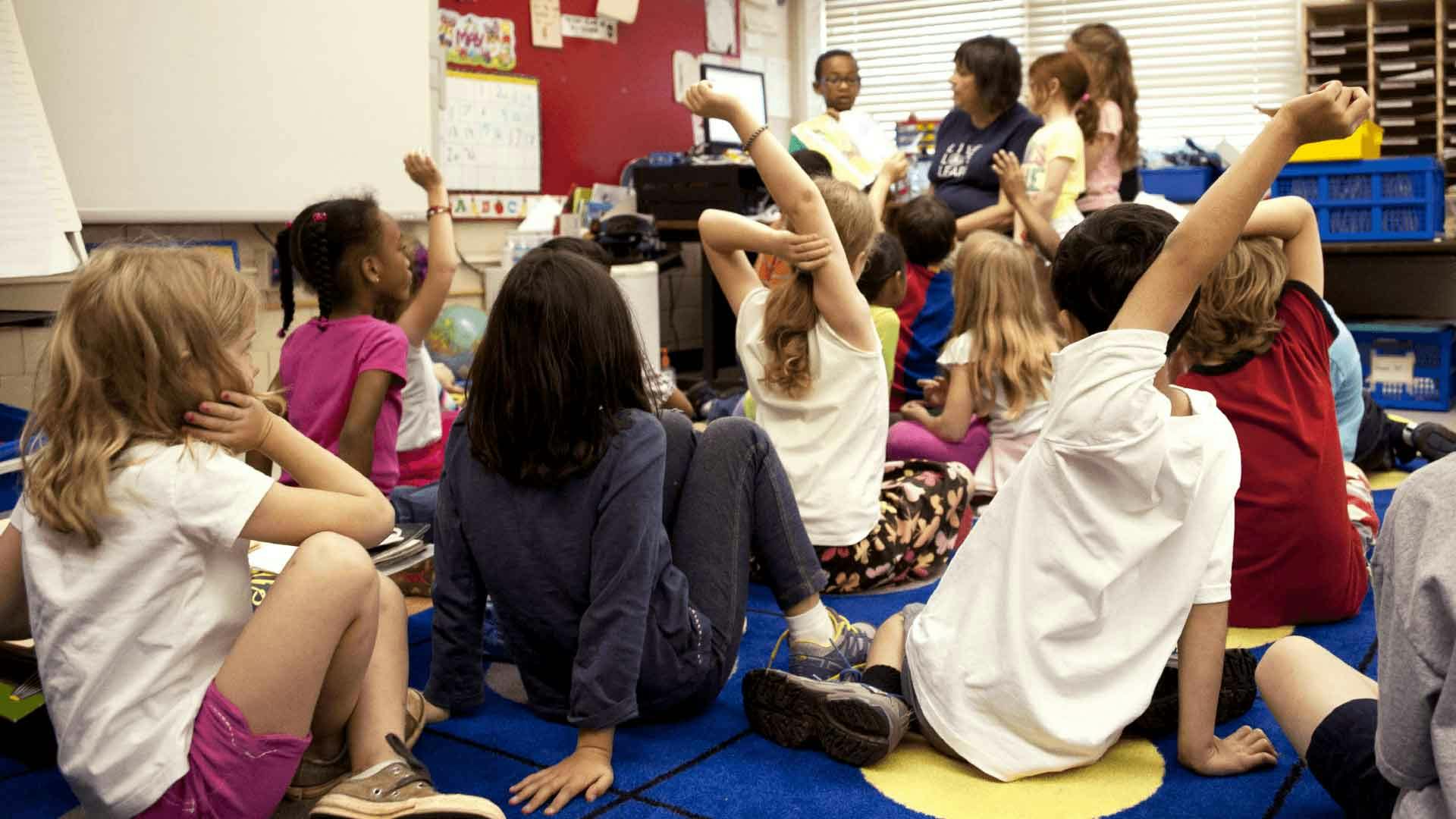
What Are Number Bonds?
Number bonds are a fundamental mathematical concept that helps children understand how numbers are related. A number bond consists of three parts: a whole number and two parts that add up to make that whole. For example, in the number bond 5 = 3 + 2, the number 5 is the whole, and 3 and 2 are the parts that combine to equal the whole.
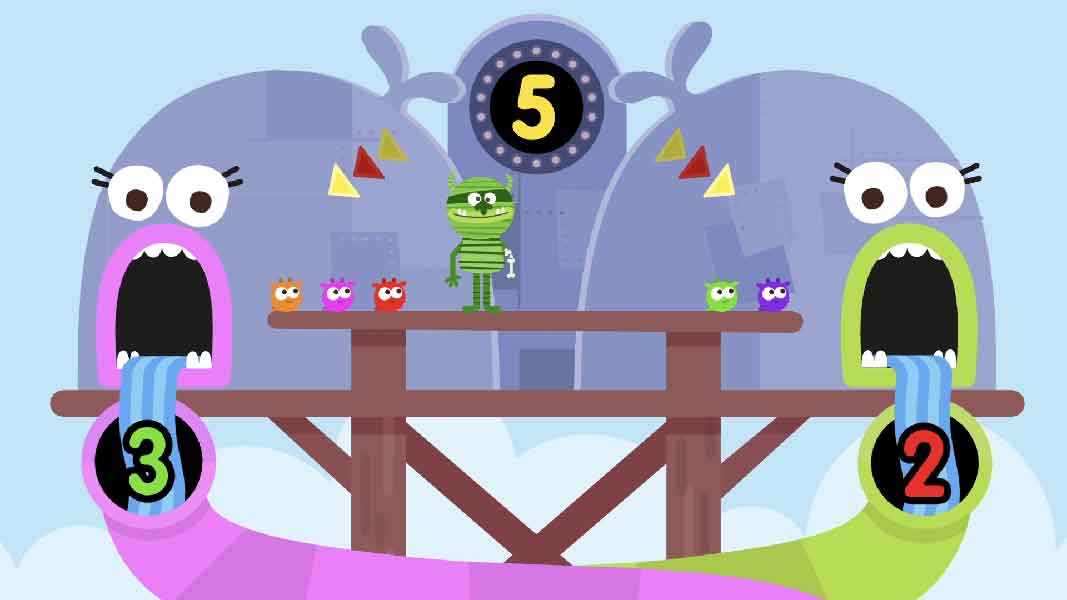
The Importance Of Learning Number Bonds Early
Conceptual Understanding
Learning number bonds at a young age help children develop a deep knowledge and understanding of addition and subtraction. Instead of memorising isolated math facts, they learn all about the relationships between numbers and the different ways in which they break apart and go back together. This understanding is the foundation upon which more advanced mathematical concepts can be built.
Confidence Boost
When children can easily break down numbers into their constituent parts, they gain confidence in their ability to work with numbers. They feel less intimidated by math problems because they know they have the tools to tackle them. This early success fosters a positive attitude towards math, which is crucial for long-term success.
Mental Math Skills
Number bonds enable children to perform mental math calculations quickly and accurately. As they progress through their education, they'll find this skill invaluable in solving more complex problems. Mental math proficiency not only saves time but also enhances problem-solving abilities.
Stronger Problem-Solving Skills
Children develop strong problem-solving skills from learning number bonds. They learn how to think critically and logically about mathematical concepts, which are essential skills in various aspects of life as well as math.
Better Prepared for Future Concepts
Number bonds provide a solid foundation for learning more advanced math concepts, such as multiplication and division. When children have a firm grasp of the relationships between numbers, they are better equipped to tackle these higher-level concepts.
Teaching Number Bonds Effectively
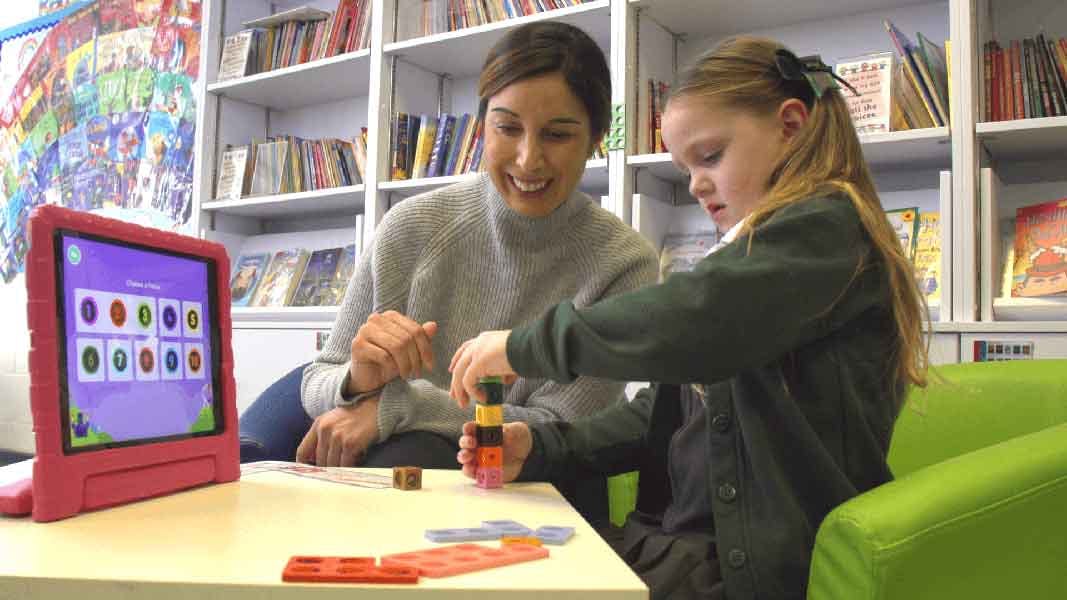
Now that we've established the importance of teaching number bonds at a young age, let's look at some strategies for effective instruction:
Use Visual Aids: Visual representations, like diagrams and pictures, can help children grasp the concept of number bonds more easily.
Hands-On Activities: Incorporate hands-on activities, such as counting objects or using manipulatives like counters or beans, to make learning number bonds interactive and engaging.
Repetition and Practice: Reinforce number bonds through regular practice and repetition. This helps children internalise the concept.
Real-Life Examples: Show children how number bonds are used in real-life situations, such as sharing toys or dividing snacks among friends.
Positive Reinforcement: Celebrate small achievements and provide positive feedback to boost your child's confidence in their math abilities.
Teaching number bonds to children early is not just about helping them with math skills; it's about building a strong foundation to serve them well throughout their educational journey. By understanding the relationships between numbers, children gain confidence, enhance their problem-solving abilities, and are better prepared for more advanced math challenges. Invest the time and effort in teaching number bonds early, and you'll set your child on the path to mathematical success and confidence that will last a lifetime.
Click here to try Teach Your Monster Number Skills for free
Navigating through the world of numbers can be a delightful experience for young minds! Especially with Singapore Math, a method that has become popular globally for teaching kids about numbers in a unique and effective way.
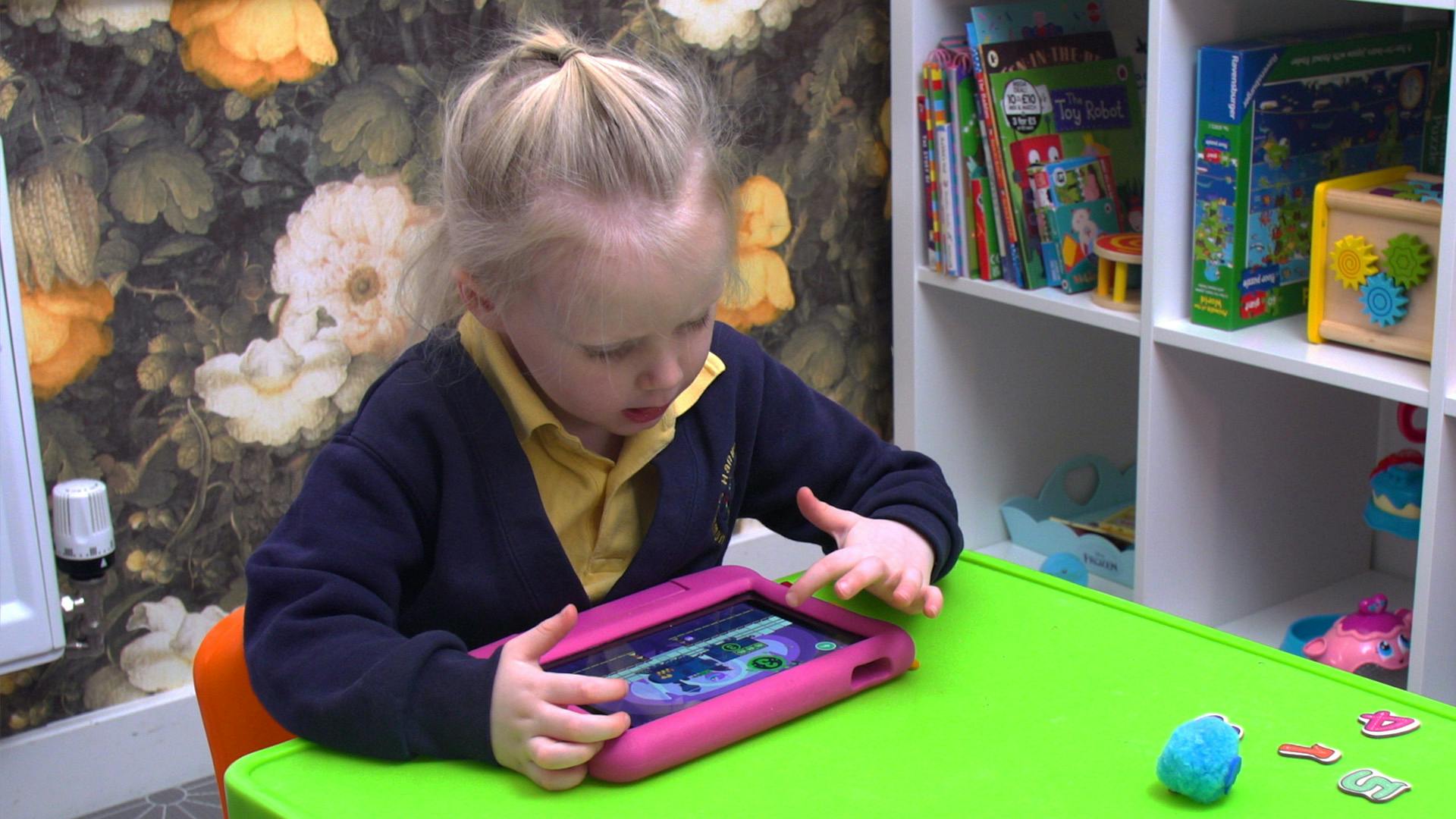
What is Singapore Math?
Singapore Math is more than just a way of teaching math; it’s about helping children understand how numbers work. This method encourages:
Understanding over memorization: Kids get to know why numbers work the way they do, achieving maths mastery.
Visual learning: Using objects and pictures to help explain math.
Mental math: Helping kids feel comfortable to work out problems in their heads.
Step-by-Step Progression: Kids progress from concrete (objects), to pictorial (visual), to abstract understanding (numbers).
Building Confidence with Numbers
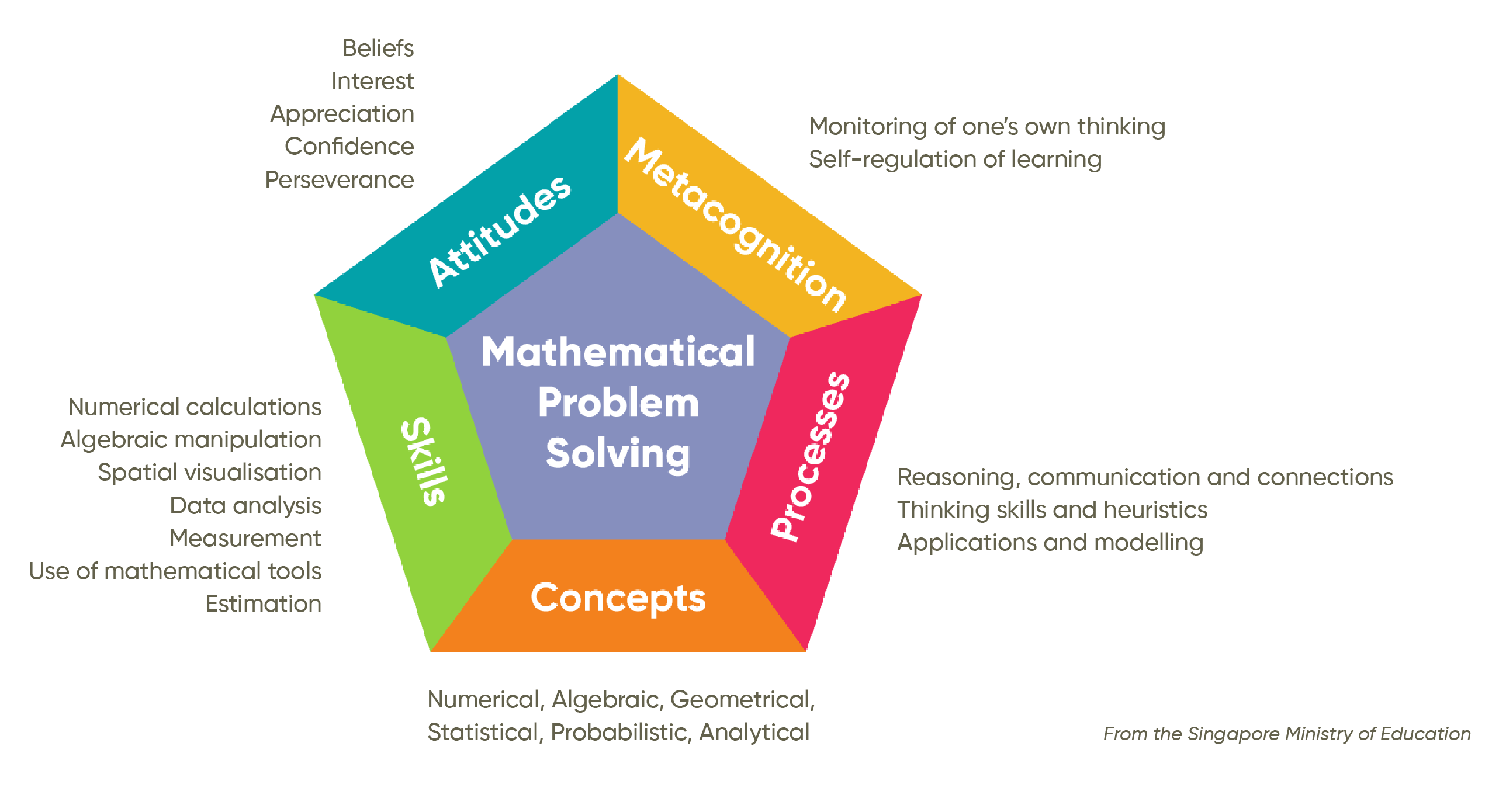
Singapore Math helps kids become friends with numbers. It does this by:
Teaching basics well: Kids really understand the basics of math before moving on.
Making math real: Uses real-life examples so math has context and makes sense.
Practicing regularly: This helps turn understanding into confidence.
Simple Tips for Parents
If you're a parent looking to help your child with math, consider these simple steps:
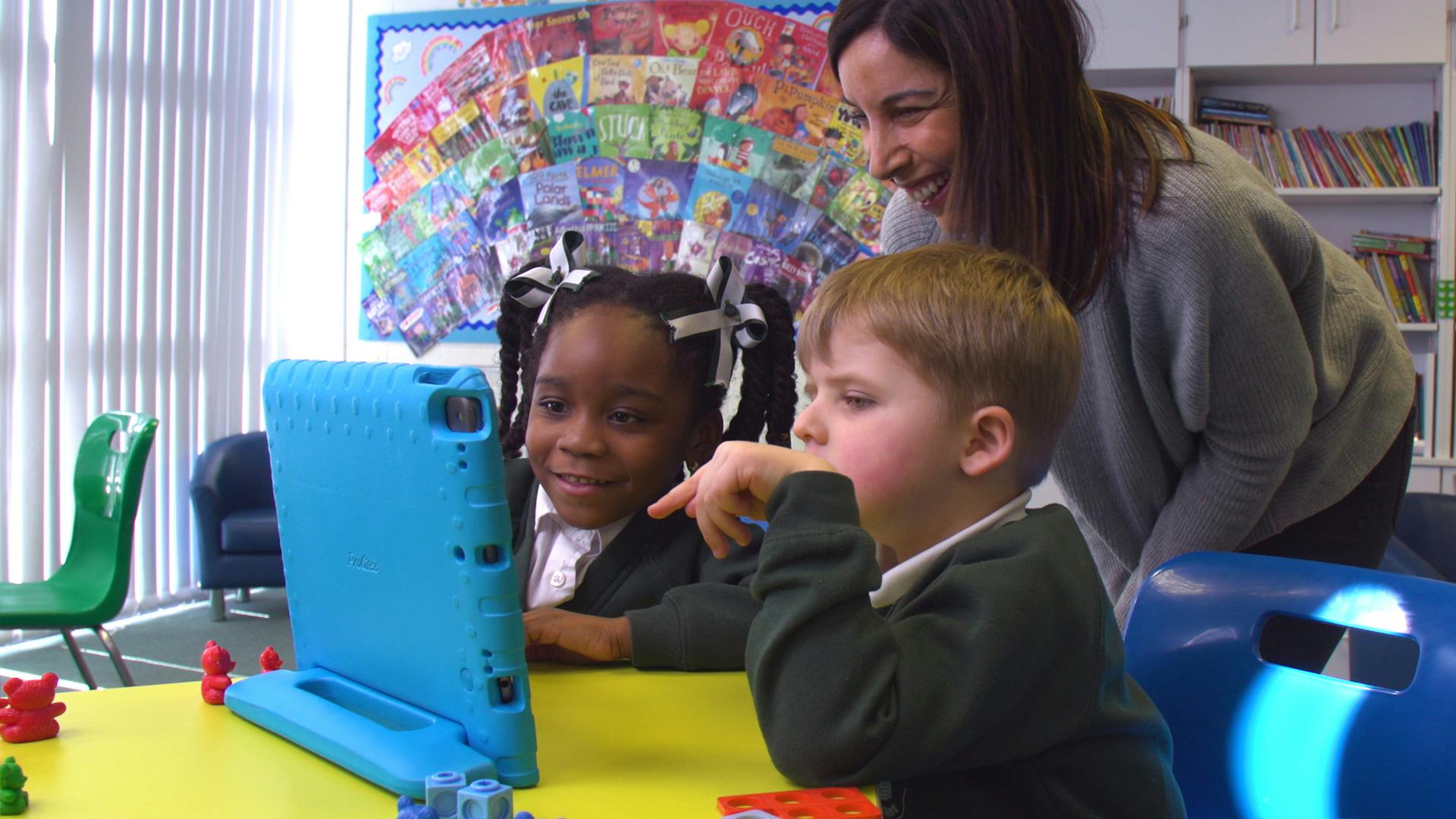
Use objects: Count using things around the house.
Include math in stories: Make numbers a part of bedtime stories.
Talk about numbers daily: Counting fruits or toys can make math a fun daily activity!
Using Teach Your Monster Number Skills

Teach Your Monster Number Skills is a fun app that mixes games with Singapore Maths concepts. It:
Makes learning fun: Kids are engaged and focused on playing the game, while learning fundamental number skills.
Adapts to Your Child: The app changes to suit your child’s learning speed, ensuring they grasp one concept firmly before moving to the next.
Click here to try Teach Your Monster Number Skills for free
Expert Insight
Our math education advisor on Teach Your Monster Number Skills, Bernie Westacott, highlights how visual learning is crucial: "Singapore Maths teaches children to represent a problem in a visual way as something to look at and explore before progressing to more abstract calculation methods."
Dr. Yeap Ban Har, an international authority on the Singapore Math Method, asserts: "One of the key strengths of math teaching in Singapore is the development of number sense before the memorization of number facts."
Charting a Joyful Numerical Adventure for Your Child
Helping your child learn and enjoy math can be simple and effective with Singapore Math. Every child’s learning journey is different, and each step they take towards understanding numbers is one to celebrate!
Remember: With consistent and fun learning, kids will find joy and confidence in their mathematical journey!
Click here to try Teach Your Monster Number Skills for free
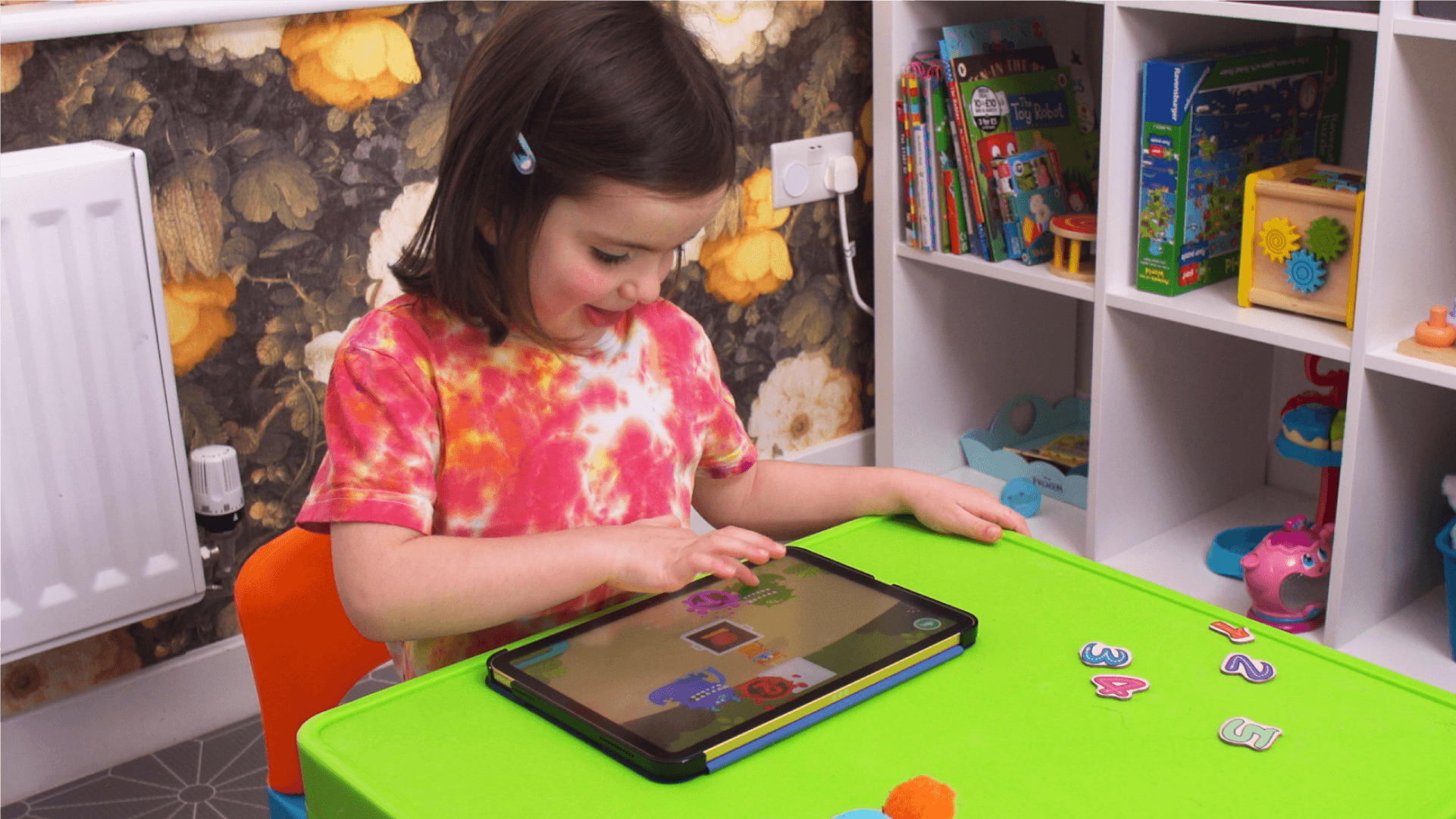
References
Westacott, B. "Exploring Math Visually." Mathematical Exploration Strategies
Dr. Yeap, B.H. "In-depth Number Understanding." Approaches to Singapore Math












